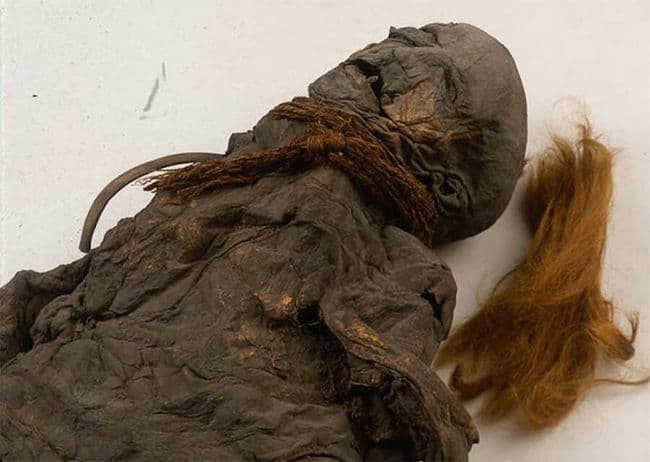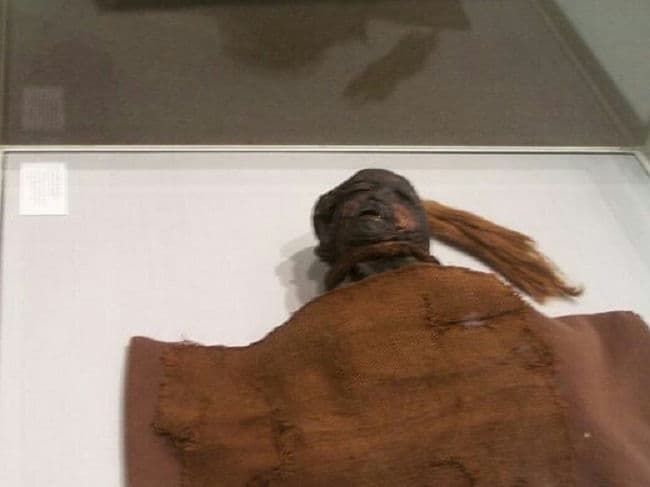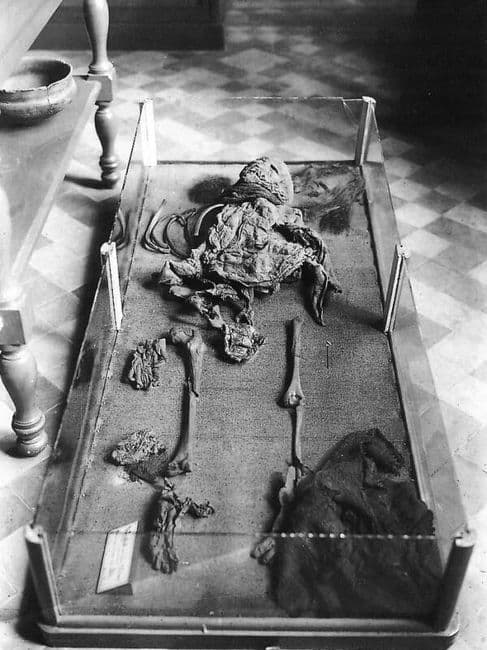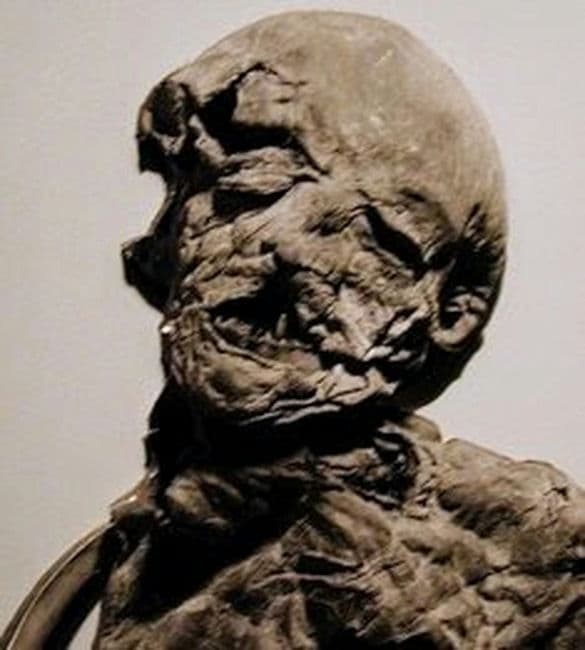The 2,000-year-old mummy was discovered in a swamp in the Netherlands in 1897, and many believe that this young girl was executed or sacrificed.

On May 12, 1897, two workers were dredging peat from the Stijfveen swamp near the village of Yde (Netherlands) when they discovered a deformed, intact, black body with red hair. According to officials at the time, the girl was likely killed because of a knotted rope on her neck and a stab wound near her collarbone.

It took scientists a century to investigate that it was the body of a 16-year-old girl but just over 1 meter tall, who died around 54 BC to 128 AD. The mummy is now known as the “Yde girl” and has been preserved for 2,000 years.
History of the “Yde girl”
When officials of the village of Yde and the Drents Museum of Historical Art received the body on May 21, 1897, its identity remained a mystery. The noose was wrapped around the neck and the damaged limbs showed that this person had been brutally murdered. In addition, half of the body’s hair was cut short and the teeth were gone.

There is no way to determine the age of the Yde girl, because it was not until the 1940s that the radiocarbon determination method was announced. It was not until 1992 that Professor Richard Neave of Manchester University did a CT scan of the skull and determined that this was the body of a female about 16 years old, due to the lack of wisdom teeth. She was determined to have scoliosis, which caused her body to weaken and her right foot to swell abnormally, leading to limping.

Radiocarbon dating showed that the young girl died in the early Christian period, and the marsh’s tannic acid has protected her body ever since. In 1994, when experts recreated this mysterious mummy, the “Yde girl” became famous around the world.
The reason why the victim was killed remains uncertain, but Dr. Roy van Beek of Wageningen University has made some guesses: “Two hypotheses have been put forward. The first is that the bodies were dumped in the lagoon Swamps can be of people who broke the rules or were convicted of something. The second explanation is more widespread, which is sacrifice to a higher power.”

The facial reconstruction of the “Yde girl” was made in 1994.
Reconstruction of the “Yde girl” face made in 1994. (Photo: Drents Museum).
How did the Yde girl die?
In 2019, using research on the landscape and topography as a foundation, Dr. Van Beek and colleagues determined that the Yde girl’s death was likely due to privacy issues.
Dr Van Beek said: “The girl may have come from a nearby settlement on the Yde slopes. However, her body was left in a small and relatively shallow swamp about a kilometer away “.
Drents Museum officials claim that her hair was cut off by 19th-century villagers. Furthermore, cutting a woman’s hair for adultery in the Middle Ages was actually very common.
However, with no further evidence of her husband or basis suggesting that she was disabled or deformed, it has been suggested that it is more likely that the young girl was the ideal target for child sacrifice with Hope agriculture prospered at that time.
The Yde girl mummy is on display at the Drents museum.
The Yde girl mummy is on display at the Drents museum. (Photo: ATI).
To this day, the circumstances surrounding the death of the “Yde girl” remain a mystery. Currently, the mummy is being kept and preserved at the Drents Museum in Assen, the Netherlands.

